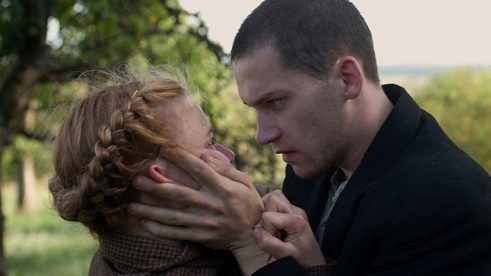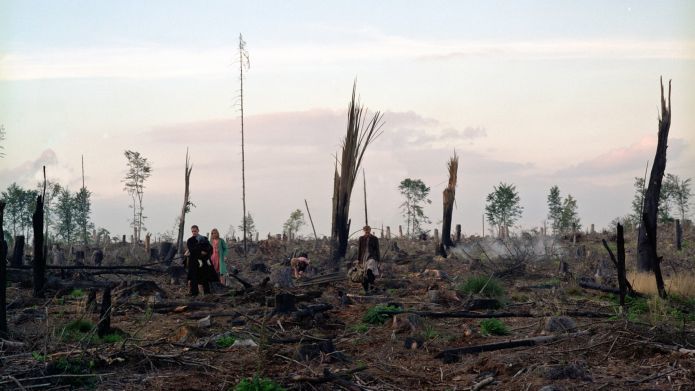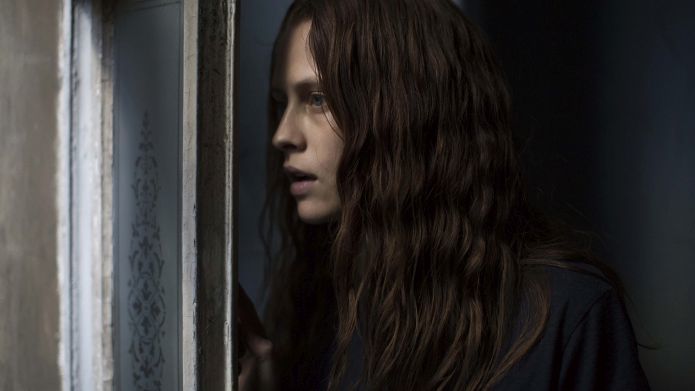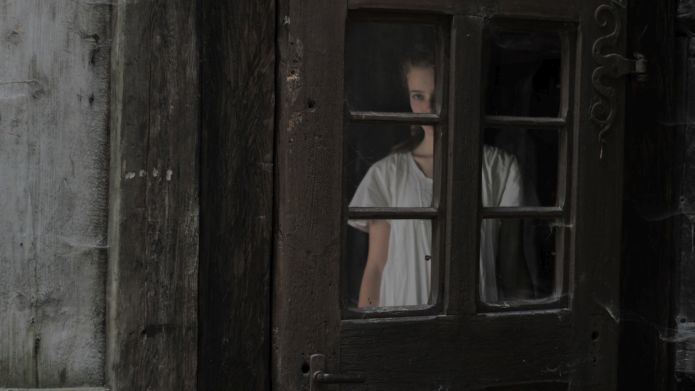Cate Shortland
An Australian filmmaker’s visions of Germany

Cate Shortland’s resume may only boast three features to date; however her most recent two efforts share a location that’s far from typical for Australian filmmakers: Germany. After coming to fame in 2004 with the Snowy River-set 'Somersault', it took eight years and a change of continent before 2012’s 'Lore' announced her return, and then five more before 2017’s 'Berlin Syndrome' did so once more. One tells of a family of German children’s effort to get to Hamburg in the immediate aftermath of Second World War, the other follows a Brisbane backpacker’s vacation in its titular setting.
Jumping from an Australian place immortalised in folklore to the other side of the world might seem unusual, but it couldn’t prove more fitting for Shortland’s recurrent concerns. Both Lore and Berlin Syndrome focus on protagonists forced, in difficult circumstances, to adjust their view of the world. They’re survivalist tales pitched against oppression of the ideological kind. Where better to make that plain than a country that has grappled with the same struggle, lived through it, and prospered?
The weight of history
Indeed, it’s impossible to divorce Shortland’s choice of setting from the weight of history. As any visitor to Germany can’t help noticing, the nation itself retains a steadfast commitment to ensuring that World War II doesn’t simply fade into the collective memory. Forgetting harsh realities is easier than facing them, a situation that every monument dedicated to atrocities, every plaque in a tourist destination, and every remaining piece of the Berlin wall rallies against. Shortland strives to recreate this experience, crafting tales of those who do the same, and ensuring that the audience does along with them. 'Lore' (2012) by Cate Shortland.
| © Transmission Films
In Lore, teenager Hannelore Dressler (Saskia Rosendahl) has grown up in a Nazi household, but is forced to broaden her perspective and seek help from a concentration camp survivor in order to usher her four siblings to safety. In an interview with Time Out upon the film’s release, Shortland was frank about the difficulty of tackling the other side of the conflict and asking viewers to connect with an indoctrinated young woman. “I knew we had to get it as right as we could, because you’re not dealing with the victims. You’re dealing with the other side. You have to do some soul searching,” she offered.
'Lore' (2012) by Cate Shortland.
| © Transmission Films
In Lore, teenager Hannelore Dressler (Saskia Rosendahl) has grown up in a Nazi household, but is forced to broaden her perspective and seek help from a concentration camp survivor in order to usher her four siblings to safety. In an interview with Time Out upon the film’s release, Shortland was frank about the difficulty of tackling the other side of the conflict and asking viewers to connect with an indoctrinated young woman. “I knew we had to get it as right as we could, because you’re not dealing with the victims. You’re dealing with the other side. You have to do some soul searching,” she offered.Lore may take an overt approach to battling an enforced way of thinking, but that doesn’t make it a forceful film. There’s no escaping the film’s contemplation of the second major battle of the twentieth century, set as it is as the conflict comes to an end; however there’s also no escaping its broader concerns. Every step towards her destination, through danger and opposition, inspires questions. Hannelore’s searching mind endeavours to make sense of her predicament, but it’s far from an easy task. Shortland calls attention to this process — in fact, other than external threats, Hannelore’s moral and intellectual quandary comprises the bulk of the film’s dramatic thrust. The portrait that emerges proves, above all else, one of resilience and adaptability that applies equally to the film’s protagonist and to her country.
Seeing the past in the present
With Berlin Syndrome, Shortland ventures seven decades past the war, but doesn’t let its impact fall out of view. Nor does she alter her focus on the psychology that stems from tough circumstances. Adapting the novel of the same name for the screen, instead of making her lead character confront a problematic mindset, she slowly immerses her in one. Painting a picture of endurance, and of conquering negative influences, is still her intention, just approached from the vantage of a society far removed from trouble rather than one immersed in war. Teresa Parker and Max Riemelt in 'Berlin Syndrome' (2017)
| © eOne Films
Here, Clare (Teresa Palmer) arrives in Berlin overflowing with enthusiasm as a tourist in a foreign land, but her ability to explore is suddenly, unexpectedly hampered when she meets Andi (Max Riemelt), they connect romantically, and he makes her his prisoner. “I am fascinated by how she transcends her situation,” Shortland told Women in Hollywood when the film screened at the 2017 Sundance Film Festival. She continued, “how history is always present. How both Andi and Clare become ruled by the psychology of entrapment — he as the capturer and she as his prisoner. Clare cannot rely on anything or anyone. In the end, I fell in love with her resilience. She is a survivor.”.
Teresa Parker and Max Riemelt in 'Berlin Syndrome' (2017)
| © eOne Films
Here, Clare (Teresa Palmer) arrives in Berlin overflowing with enthusiasm as a tourist in a foreign land, but her ability to explore is suddenly, unexpectedly hampered when she meets Andi (Max Riemelt), they connect romantically, and he makes her his prisoner. “I am fascinated by how she transcends her situation,” Shortland told Women in Hollywood when the film screened at the 2017 Sundance Film Festival. She continued, “how history is always present. How both Andi and Clare become ruled by the psychology of entrapment — he as the capturer and she as his prisoner. Clare cannot rely on anything or anyone. In the end, I fell in love with her resilience. She is a survivor.”.Taking its title from the condition that sees hostages bond with their captors, Berlin Syndrome flags its angle from the outset. Just from the film’s name, audiences already know that Clare will agonise over how she approaches her new incarceration. Sometimes she fights violently against Andi. Sometimes she finds herself playing along. Flitting from one to the other provides a complex rendering of a complicated state, and it also shows the tussle that emerges when someone is suddenly forced to comply with an intrusive doctrine. Shortland’s use of Germany as a location shines a spotlight on the two extremes that spring from Clare’s predicament: once again, history casts a shadow as bleak times come to mind, but with it comes the knowledge that breaking free and thriving is possible.
Peering through a window
As well as their shared themes, there’s another commonality that arises in Lore and Berlin Syndrome that helps demonstrate how Shortland’s fascination with Germany plays out on on screen, and why. If you want to draw attention to how a country has overcome ideological struggles, and how that might be relevant today, it’s imperative to ensure that your viewers are primed to look closer. With that in mind, it’s not by accident that Shortland frequently depicts her characters visually examining their surroundings through a frame, albeit ones surrounding panes of glass rather than in a movie theatre. Eerily similar: Images from 'Berlin Syndrome'...
| © eOne Films
Eerily similar: Images from 'Berlin Syndrome'...
| © eOne Films
 ...and 'Lore'.
| © Transmission Films
Indeed, the first proper glimpse of Hannelore offered in Lore sees her peering out of the window at her father’s return outside. She’ll keep stealing glimpses through others as the film rolls on, rather literally expanding her view. For Clare in Berlin Syndrome, she’s frequently staring out at Berlin around her when she first arrives, and then restricted to only seeing the city through glass once Andi takes away her freedom. Cinema, of course, places filmmakers and movie-goers in the same scenario. Whether making or watching, everyone is gazing through a portal, of sorts, at a different world. Shortland doesn’t just ask those experiencing her features to look with the same intensity as her German-set characters — she shows them that it is necessary.
...and 'Lore'.
| © Transmission Films
Indeed, the first proper glimpse of Hannelore offered in Lore sees her peering out of the window at her father’s return outside. She’ll keep stealing glimpses through others as the film rolls on, rather literally expanding her view. For Clare in Berlin Syndrome, she’s frequently staring out at Berlin around her when she first arrives, and then restricted to only seeing the city through glass once Andi takes away her freedom. Cinema, of course, places filmmakers and movie-goers in the same scenario. Whether making or watching, everyone is gazing through a portal, of sorts, at a different world. Shortland doesn’t just ask those experiencing her features to look with the same intensity as her German-set characters — she shows them that it is necessary.